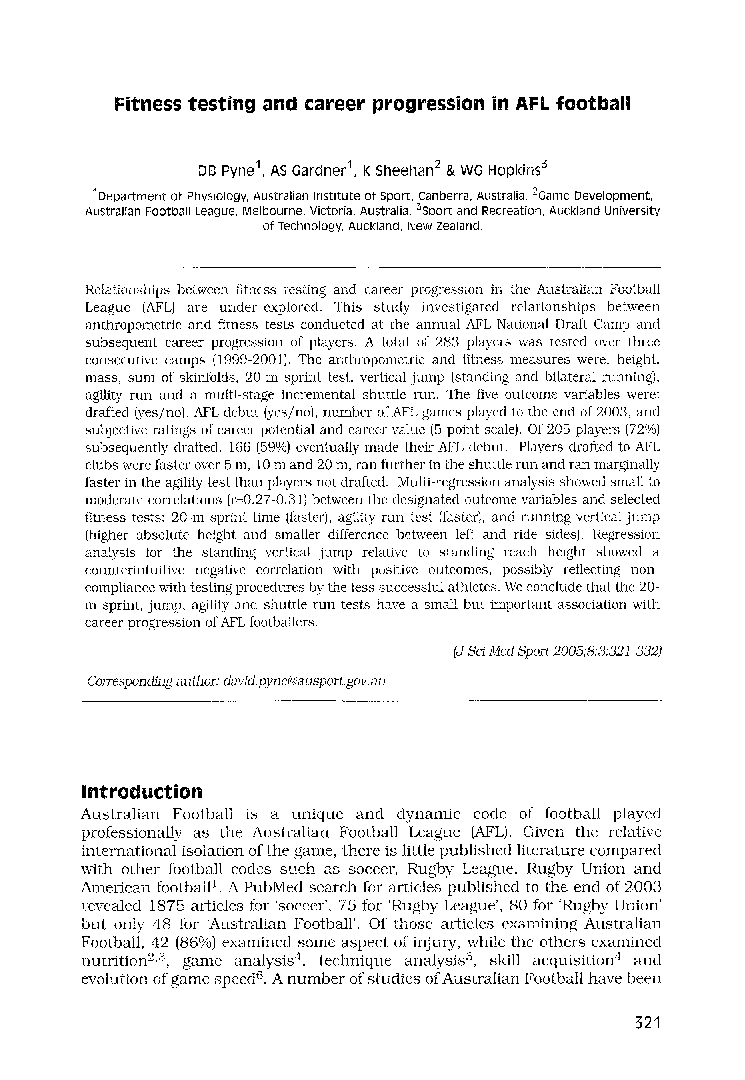| Article ID | Journal | Published Year | Pages | File Type |
|---|---|---|---|---|
| 9076013 | Journal of Science and Medicine in Sport | 2005 | 12 Pages |
Abstract
Relationships between fitness testing and career progression in the Australian Football Leaguc (AFL) are under-explored. This study investigated relationships between anthropometric and fitness tests conducted at the annual AFL National Draft Camp and subsequent career progression of players. A total of 283 players was tested over three consecutive camps (1999-2001). The anthropometric and fitness measures were: height, mass, sum of skinfolds, 20-m sprint test, vertical jump (standing and bilateral running), agility run and a multi-stage incremental shuttle run. The five outcome variables were: drafted (yes/no), AFL debut (yes/no), number of AFL games played to the end of 2003, and subjective ratings of career potential and career value (5-point scale). Of 205 players (72%) subsequently drafted, 166 (59%) eventually made their AFL debut. Players drafted to AFL clubs were faster over 5 m, 10 m and 20 m, ran further in the shuttle run and ran marginally faster in the agility test than players not drafted. Multi-regression analysis showed small to moderate correlations (r=0.27-0.31) between the designated outcome variables and selected fitness tests: 20-m sprint time (faster), agility run test (faster), and running vertical jump (higher absolute height and smaller difference between left and ride sides). Regression analysis for the standing vertical jump relative to standing reach height showed a counterintuitive negative correlation with positive outcomes, possibly reflecting noncompliance with testing procedures by the less successful athletes. We conclude that the 20-m sprint, jump, agility and shuttle run tests have a small but important association with career progression of AFL footballers.
Related Topics
Health Sciences
Medicine and Dentistry
Orthopedics, Sports Medicine and Rehabilitation
Authors
DB Pyne, AS Gardner, K Sheehan, WG Hopkins,
